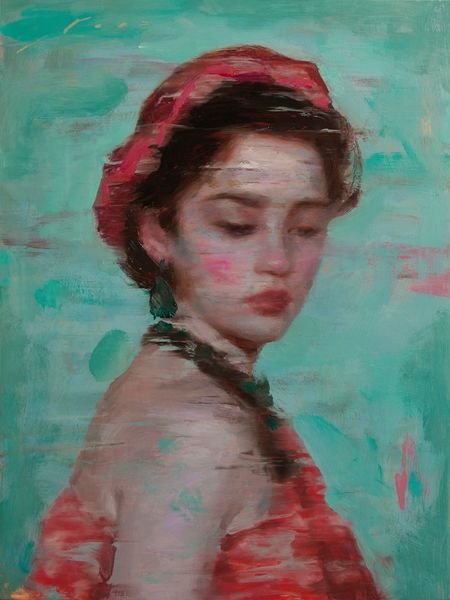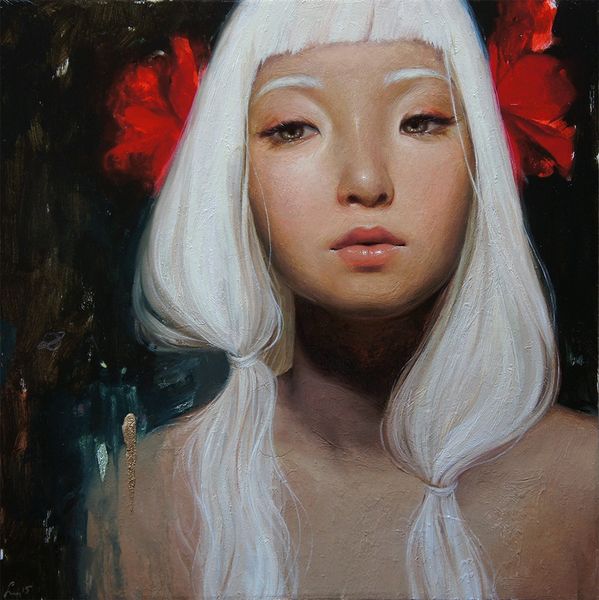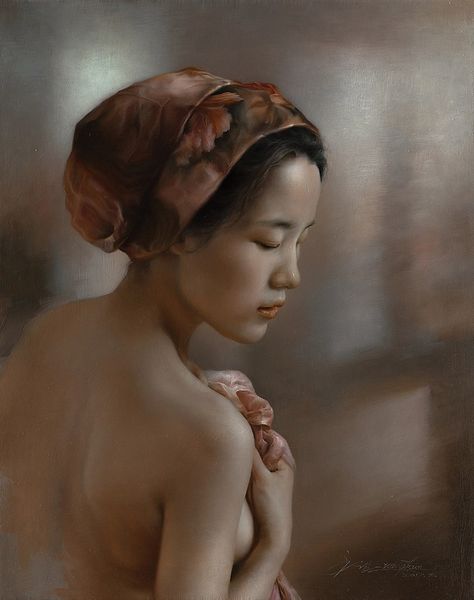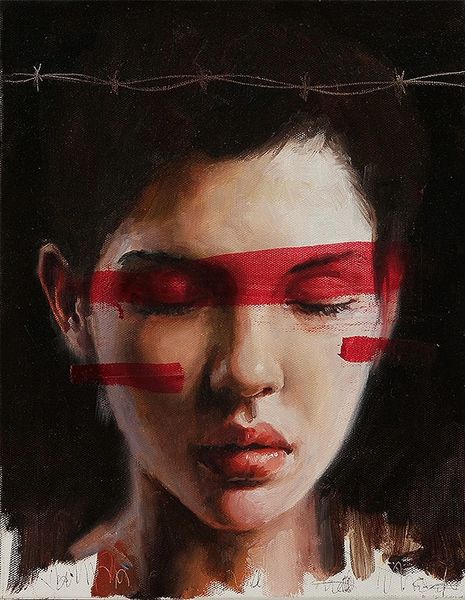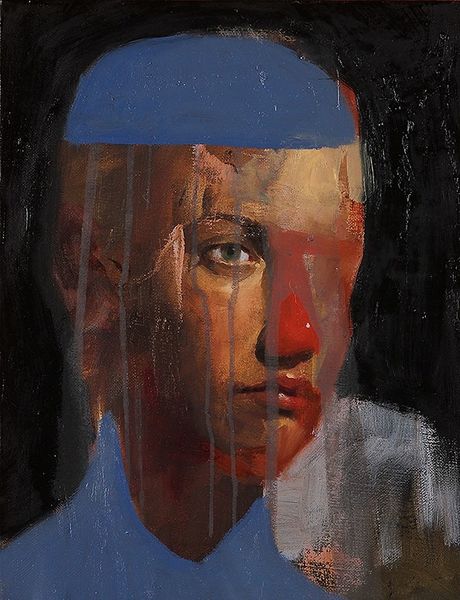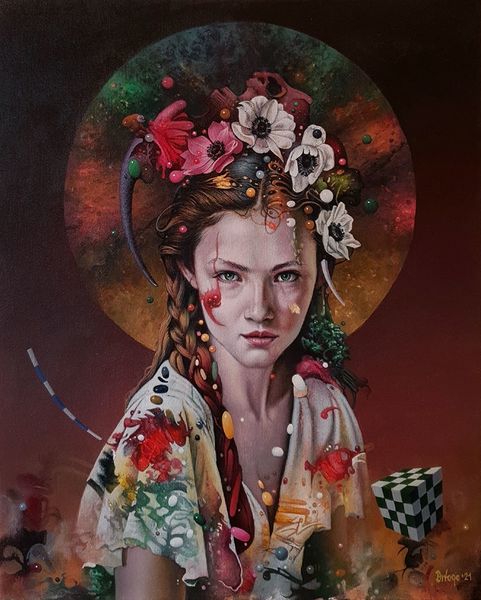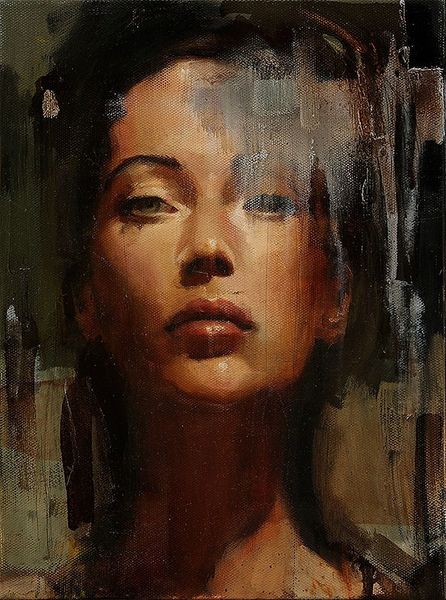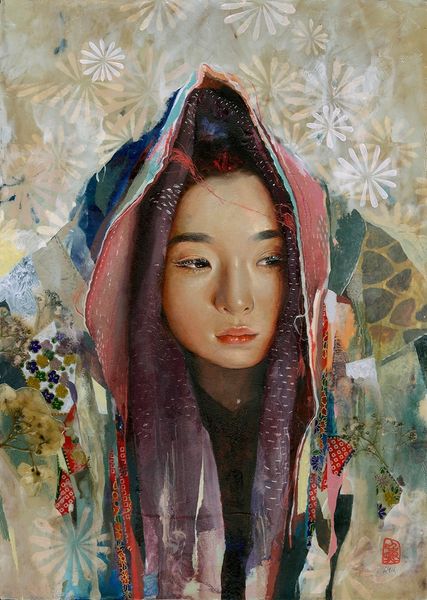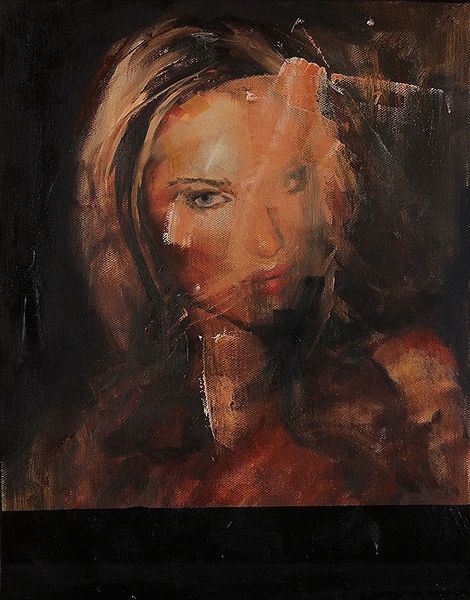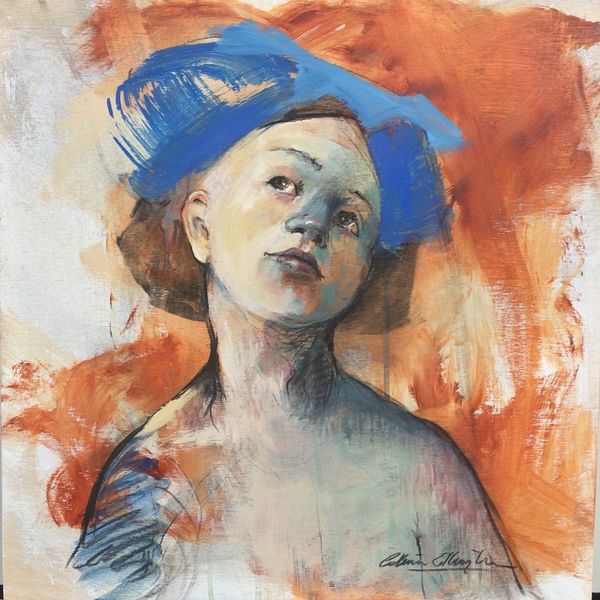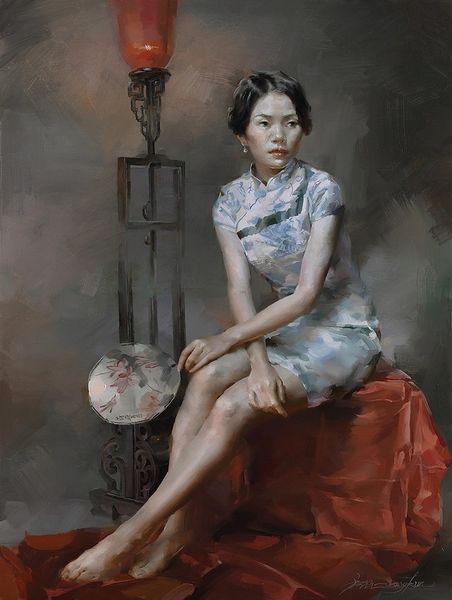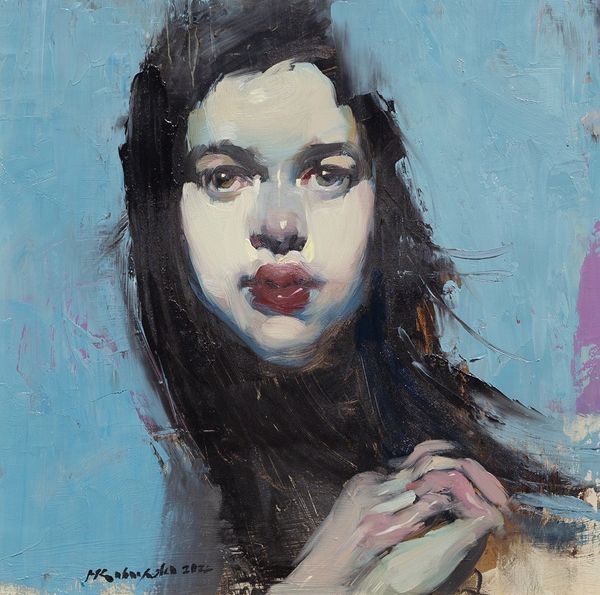
#
figurative
#
abstract painting
#
oil painting
#
neo expressionist
#
acrylic on canvas
#
portrait drawing
#
facial portrait
#
portrait art
#
fine art portrait
#
expressionist
#
digital portrait
Copyright: Modern Artists: Artvee
Curator: This is Adam Caldwell’s "Garland," created in 2016. Caldwell works with acrylic and oil on canvas, layering fragmented portraits and patterns. Editor: My first impression is one of subtle defiance. The dark, heavy swathes of color framing the portrait clash with the delicate floral crown, creating an unsettling harmony. Curator: I find it interesting how Caldwell builds up the figure. You see this push and pull between careful rendering and then these abrupt, almost violent, interruptions of color. Look at how the face is constructed, and how a stroke of blue seems to almost erase the brow. The materiality is really doing something here. Editor: Right, and this fragmentation speaks to broader narratives about identity construction, especially for women of color. The garland, a symbol of celebration and perhaps even innocence, is contrasted with this deconstructed portrayal, suggesting the pressures to conform while grappling with internal conflicts. Curator: The red and black bands are also intriguing in their relationship to the figure. It is not immediately clear if these elements exist in the same plane. Caldwell intentionally flattens the image, directing our attention to the constructed nature of portraiture itself. There’s a constant shifting between foreground and background, making you consider the physical processes employed. Editor: Yes, this certainly begs questions around cultural commodification and representation. Is the "garland" merely decorative, an exoticized element? Or does it reclaim agency for the subject, asserting her presence despite—or even because of—the fragmented depiction? It disrupts any easy reading, placing the onus on us to unpack layers of meaning. Curator: Thinking about Caldwell’s larger body of work, one could really explore this push and pull he orchestrates. How his choices regarding paint application—the very physical act of layering and obscuring—shape our understanding of not just who is portrayed but the mechanics of image-making. Editor: It invites us to really consider the gaze, whose expectations we are fulfilling, and whose narratives are being amplified, or suppressed. I keep wondering what this means for Asian women navigating the complexities of representation in Western art. Curator: It has made me think more about the ways materiality and image can subvert expectations of both traditional and modern portraiture, blurring boundaries, disrupting our engagement. Editor: I agree; for me, the piece serves as a reminder of the urgent need to continue questioning representation within larger societal power structures.
Comments
No comments
Be the first to comment and join the conversation on the ultimate creative platform.
